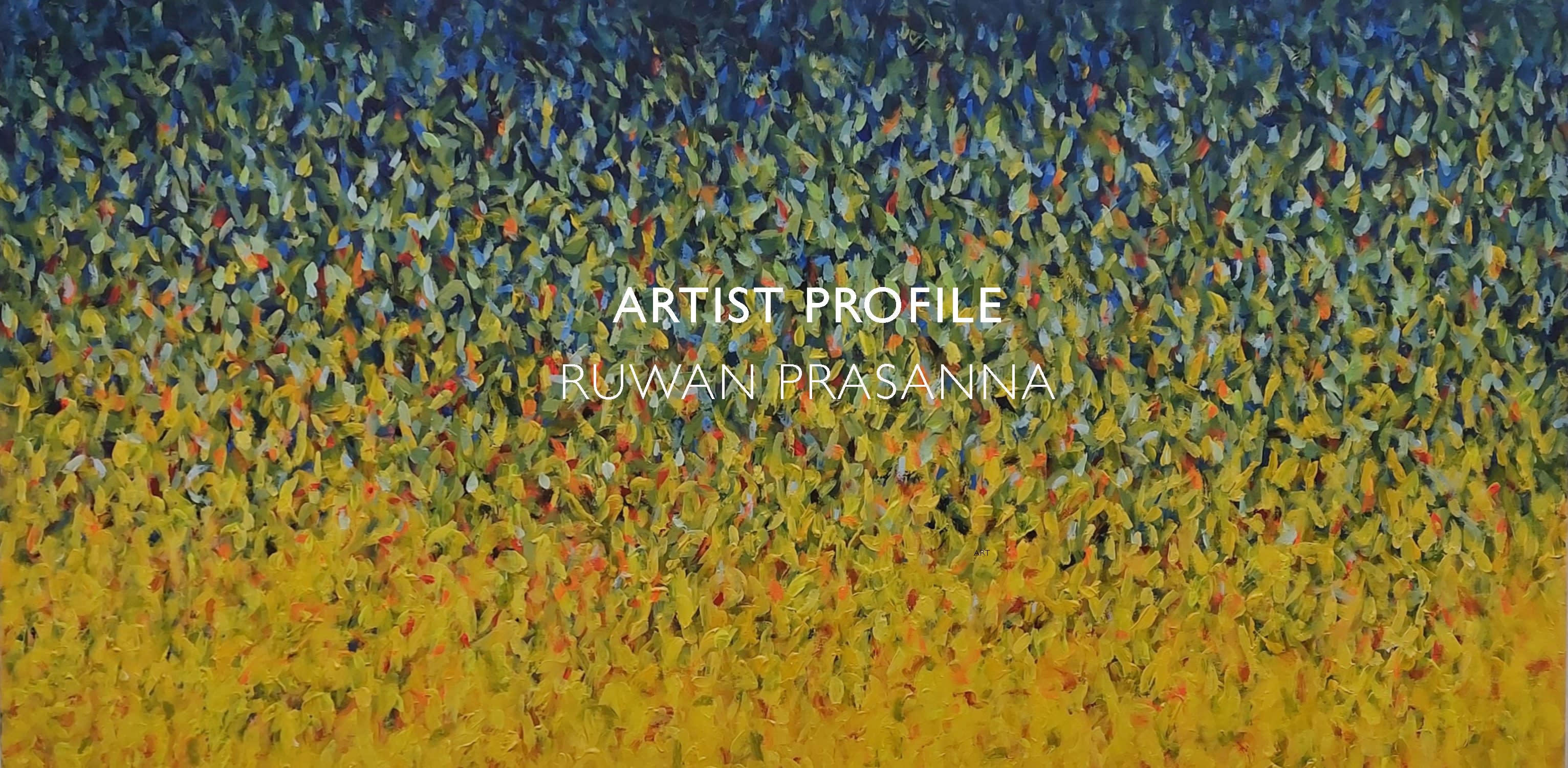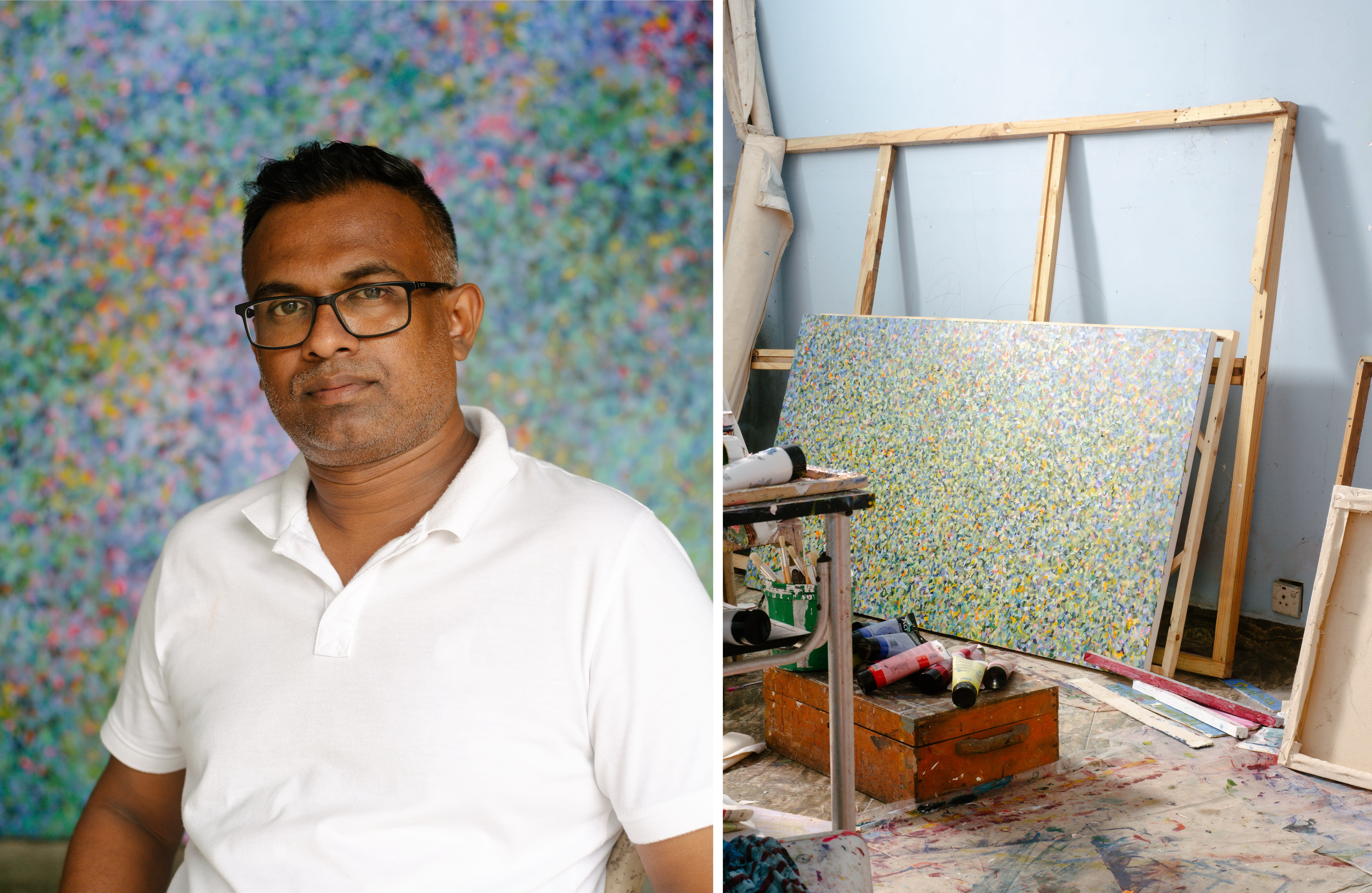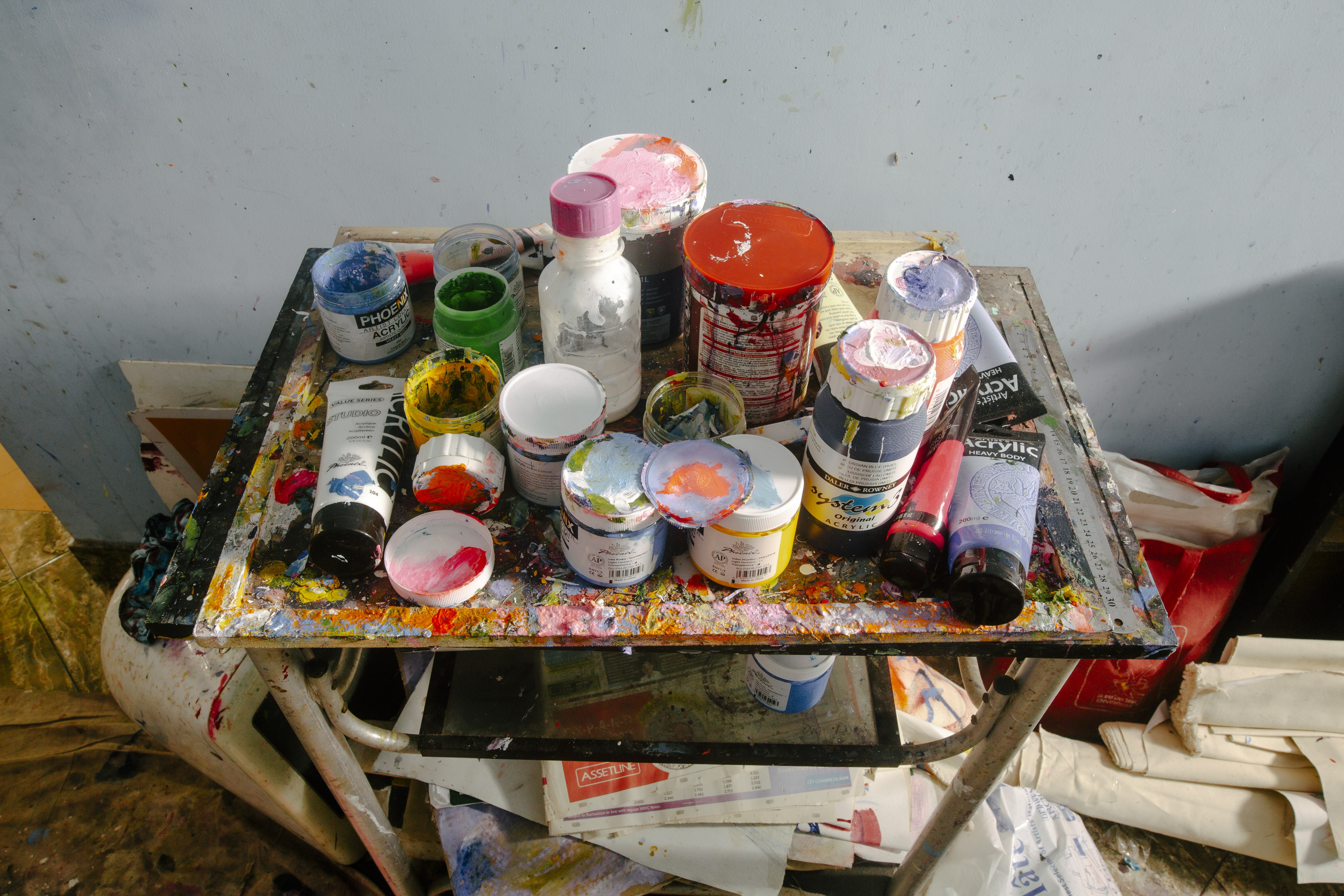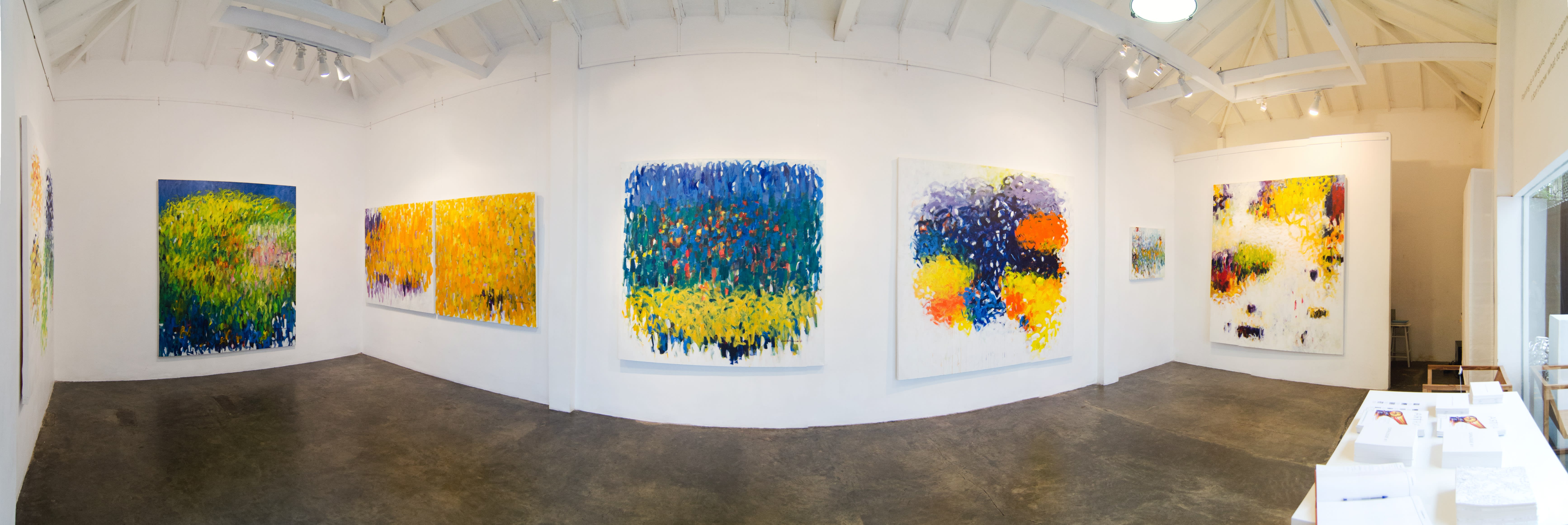
|
Ruwan Prasanna's paintings demonstrate a simplicity animated by his expertise in capturing the transitory interplay of light and color in nature, as well as the artist's lyrical sense of color inherited from the Post-Impressionists. The thick and obvious impasto of the paint brings emphasis to the texture of Ruwan's work, playing with the viewer's tactile senses. Feeling and ephemerality are central to the artist’s work.
|
 |
| Studio portrait of Ruwan (2022) Photo by: Tavish Gunasena |
COULD YOU TELL US MORE ABOUT YOUR CHILDHOOD?My childhood was spent away from the city, in a very beautiful village until I completed my studies. I enjoyed painting since I was a child and the environment of my childhood has had a direct impact on my art.
WHAT DREW YOU TO ADVERTISING?There was a close connection between advertising and art at the time I began painting. Many students who graduated from the university joined the advertising field during that time. Very often, final-year students were selected by agencies for different positions at career fairs. This is how I received the opportunity to join the advertising stream.
HOW DID YOUR EDUCATION AT VIBHAVI SHAPE YOUR THINKING AND APPROACH TO ART MAKING?Vibhavi taught me the discipline an artist is required to have when creating an artwork. I learnt about the correct use of colours and how to bring out a meaningful quality through those colours during the time I spent at Vibhavi.
|
When did you have your first exhibition and what was the journey like from there on?My first solo show was with Paradise Road Galleries in 2010. Since then, I have come a long way and created many artworks. I have gained a lot from these experiences and it has made me who I am today.
|
|
|
Your work resonates with abstract impressionist and post-impressionist movements. Could you tell us a little more about this engagement in your practice?
I have studied masterpieces by world-renowned artists and how they have used different techniques, colour combinations etc. When creating works that are associated with nature, rather than painting what's obvious, I have noticed that it can bring out intense feelings through an intelligent usage of colours. I admire Paul Cézanne and Claude Monet. I feel that Joan Mitchell’s style is a combination of Paul Cezanne and Claude Monet’s inspirations. I love their works because they focus mostly on nature. The same goes with Mondrian - as his earlier works were inspired by nature.
|
|
|
 |
|
| Aluyama XIV, 2021, Acrylic on Canvas, 92cm x 183cm | |
|
Private Collection of Roshun Meezan | Komorebi XIX, 2018, Acrylic on Canvas, 153cm x 122cm
|
|
Could you elaborate on your process?I don't have an initial plan or sketch when I begin working on a piece, except for the white canvas that's in front of me. I don't have a specific time at which I work on paintings but instead, I decide upon creating work depending on my mood. I do not stick to a specific timeline to complete a particular piece. Trying to complete a work of art in a fixed time frame is a difficult task for an artist since they need to work on it until they arrive at a point which feels perfect. Artists cannot be rushed.
I try to bring out a range of beautiful emotions and feelings onto the canvas and continue to work on it until the excitement of work lessens. Once I reach this stage, I know the work is complete. The important thing is to paint emotions and attempting that according to me is more challenging. What’s difficult is translating emotions into art but that is what I do.
Ruwan's studio (2022)
How are abstract paintings generally received in Sri Lanka according to you?In Sri Lanka, decorative works are mostly preferred over abstract paintings. The audience and the culture that appreciates abstract works are less. There is also a preference for political and conceptual works but I have never followed trends or tried to create works purely to please the demand.
|
|
Private Collection of Patrick Dalton | Contemporary Landscape XI, 2013, Acrylic on Canvas, 152cm x 152cm |
Anyone can see how my style has changed since the first exhibition. Over the last couple of years, I have explored several new techniques and directions to improve my style of abstraction. The criticism I have received, both positive and negative, has also been immensely helpful. However, I am still learning and exploring.
|
|
|
|
Landscape, 2014 at Saskia Fernando Gallery |
What are the new beginnings alluded in your earlier series Dawn?Dawn is a part of the day that a lot of us enjoy, including myself. It is a time of the day that soothes and calms our minds and fills us with energy. Dawn was my effort towards communicating this feeling to the viewer through these vibrant colours. I tried to create a feeling of hope filled with energy and rejuvenation in Dawn. Hence the colours used were more vibrant. I used almost all colours except for black. All these colours can evoke the feelings of nature. The colours I have used are connected to nature and colours that are not visible to the naked eye at first glance. This is how I feel about dawn, and how I see it. But this can be different from person to person. |
|
|
|
Aluyama, 2021 at Saskia Fernando Gallery |
|
|
ARE YOU WORKING ON ANYTHING NEW AT THE MOMENT?Currently, I am working on a series for the next solo exhibition which is quite different from my previous work.
Where do you like to travel the most?It has to be someplace outside of the city where there are plenty of trees and wind such as the Horton Plains or even one of the National Parks.
DESCRIBE THE FOCUS OF YOUR WORK IN THREE WORDS. Colours. Forms. Space. |






